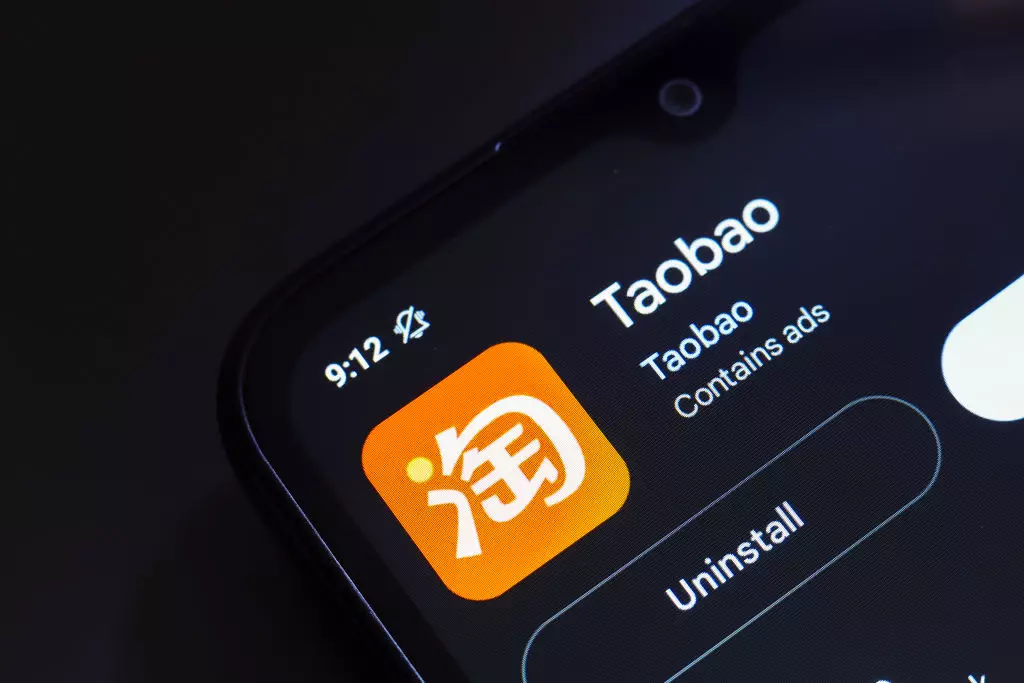In a landscape where economic policies directly affect consumer choices, the recent surge of Chinese e-commerce applications like DHgate and Taobao is a revelation. The imposition of tariffs on Chinese goods by the Trump administration has inadvertently served as a catalyst for U.S. consumers to turn towards these platforms. As traditional domestic retailers hike their prices, driven in part by supply chain constraints, savvy consumers are now exploring direct purchasing options from overseas manufacturers. This trend not only broadens the reach of these Chinese apps but illustrates a pivotal shift in American shopping behavior during challenging economic times.
Luxury in Disguise: The Secrets of Manufacturing
One of the intriguing elements fueling this growing interest in DHgate and Taobao is the recent wave of viral TikTok videos revealing the hidden truths behind the luxury goods market. Many high-end items, which consumers are led to believe are crafted solely in fashion capitals like Milan or Paris, often originate from factories in China. These videos outline a practice that involves shipping products to brand headquarters for rebranding, painting a stark contrast to the perceived value of luxury merchandise. The revelation acts as a double-edged sword: while it exposes a potential for consumers to save money, it also poses questions about the authenticity of luxury branding and consumer trust.
App Metrics: An Explosion of Interest
The astronomical surge in app downloads speaks volumes about consumer sentiment. Data indicates that Taobao saw a mind-boggling 514% increase in downloads in April alone, with DHgate similarly benefitting from the frenetic marketplace activity. The e-commerce arena in the U.S. is becoming increasingly competitive, and as platforms like Taobao navigate through Walmart, Amazon, Shein, and Temu, the dramatic rise shows that consumers are actively seeking alternatives that promise lower prices and a more direct relationship with manufacturers. The ratings climb from virtually nonexistent visibility on app charts to a prominent position underlines the insatiable appetite for unique shopping experiences and the burgeoning influence of social media on purchasing decisions.
The Price of Alternatives and Risks Involved
While the allure of purchasing products directly from China may seem like a smart financial decision, the path is fraught with risks. Consumers, driven by the notion of savings and unique finds, must remain vigilant about the quality of items being sold on these platforms. Reading reviews and analyzing seller reputations will be crucial to ensuring that expectations align with actual product quality. The spectrum of quality on these platforms ranges from striking deals to severely lacking customer satisfaction. Hence, a well-informed buyer can significantly enhance their shopping experience, while those who skip due diligence may find themselves disappointed.
The Changing Landscape of American Retail
This seismic shift in consumer behavior could signal the dawn of a new era for American retail. Traditional retailers must now reevaluate their strategies in light of these emerging alternatives. If U.S. consumers continue to embrace these platforms and their convenience, domestic brands will need to innovate and perhaps even reconsider pricing and sourcing strategies to stay competitive. The barriers between domestic and international trade continue to blur, fostering an environment where global shopping becomes the norm rather than the exception.
The Culture of Instant Gratification
Today’s consumers are increasingly seeking immediate fulfillment; the instant access to global inventories through platforms like Taobao and DHgate is proving irresistible. The typical online shopping experience, once characterized by long shipping times and potentially dubious quality, is evolving into a landscape where instant gratification meets thrills of discovery. As consumer expectations shift, the traditional shopping experience stands to be transformed. Companies now face the challenge of not just selling products but creating meaningful, engaging shopping experiences that resonate with modern buyers’ values.
The landscape is changing quickly, and while tariffs initially aimed to protect American interests, their unintended consequences may redefine how consumers shop in this global economy.

